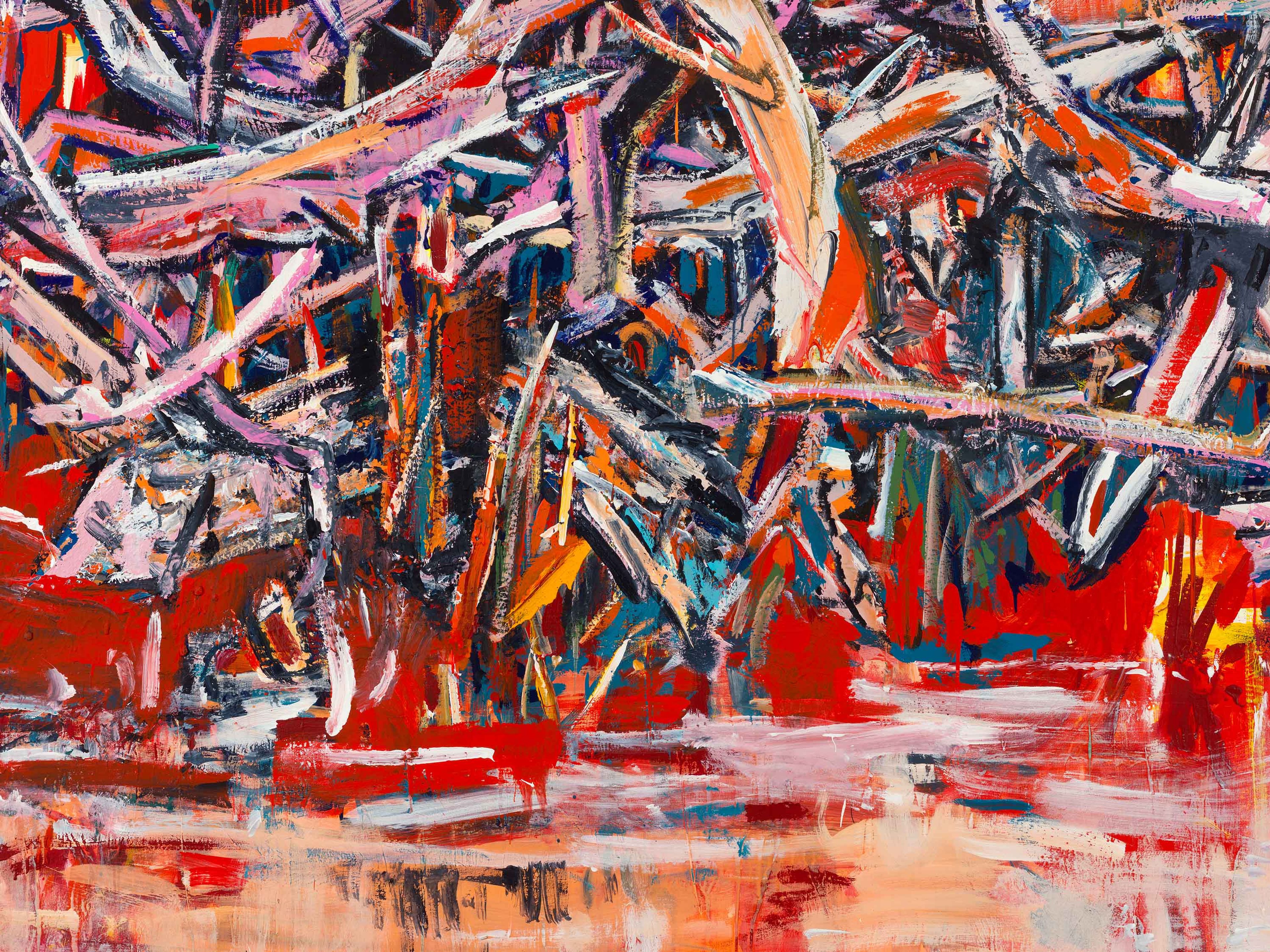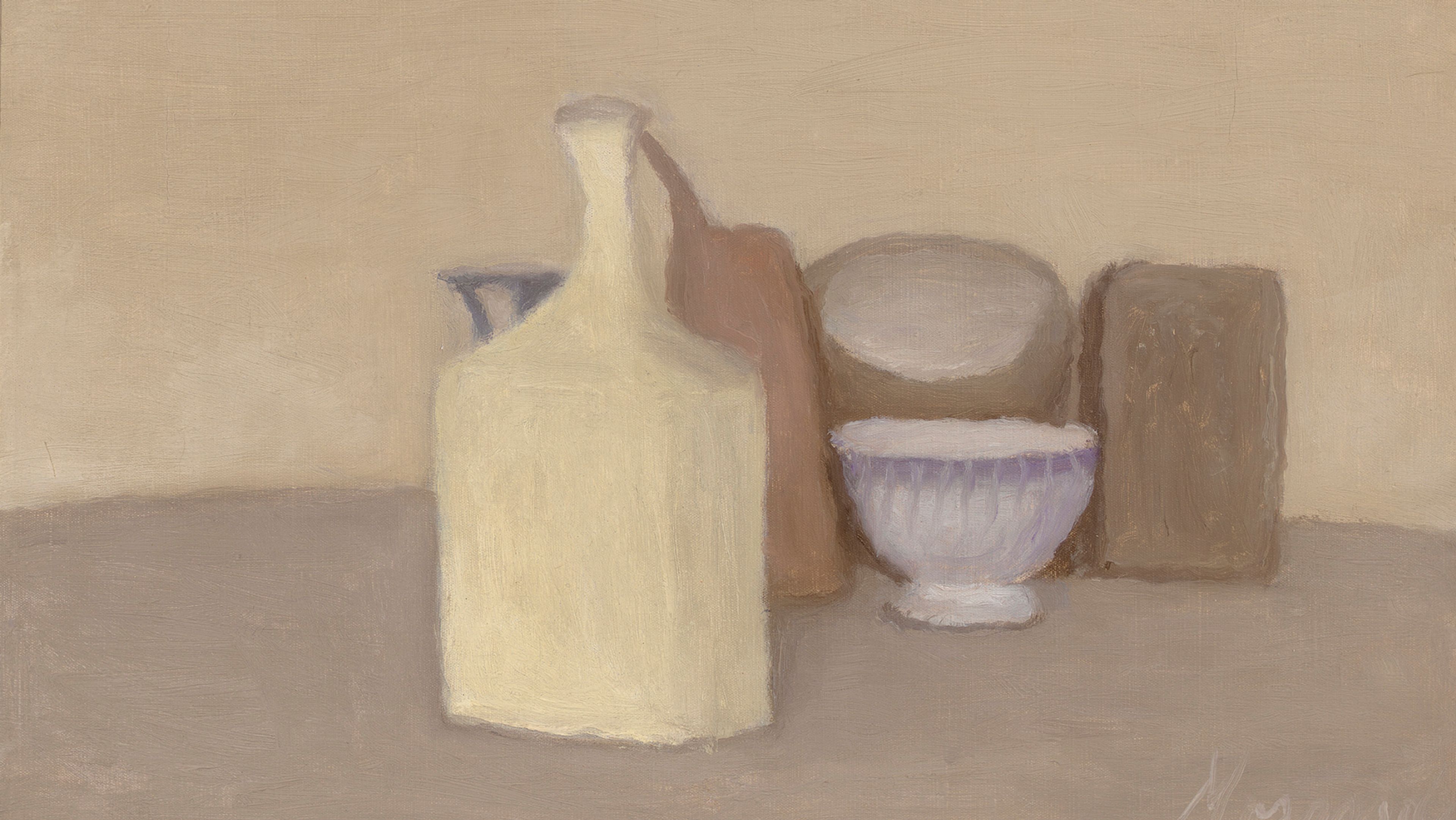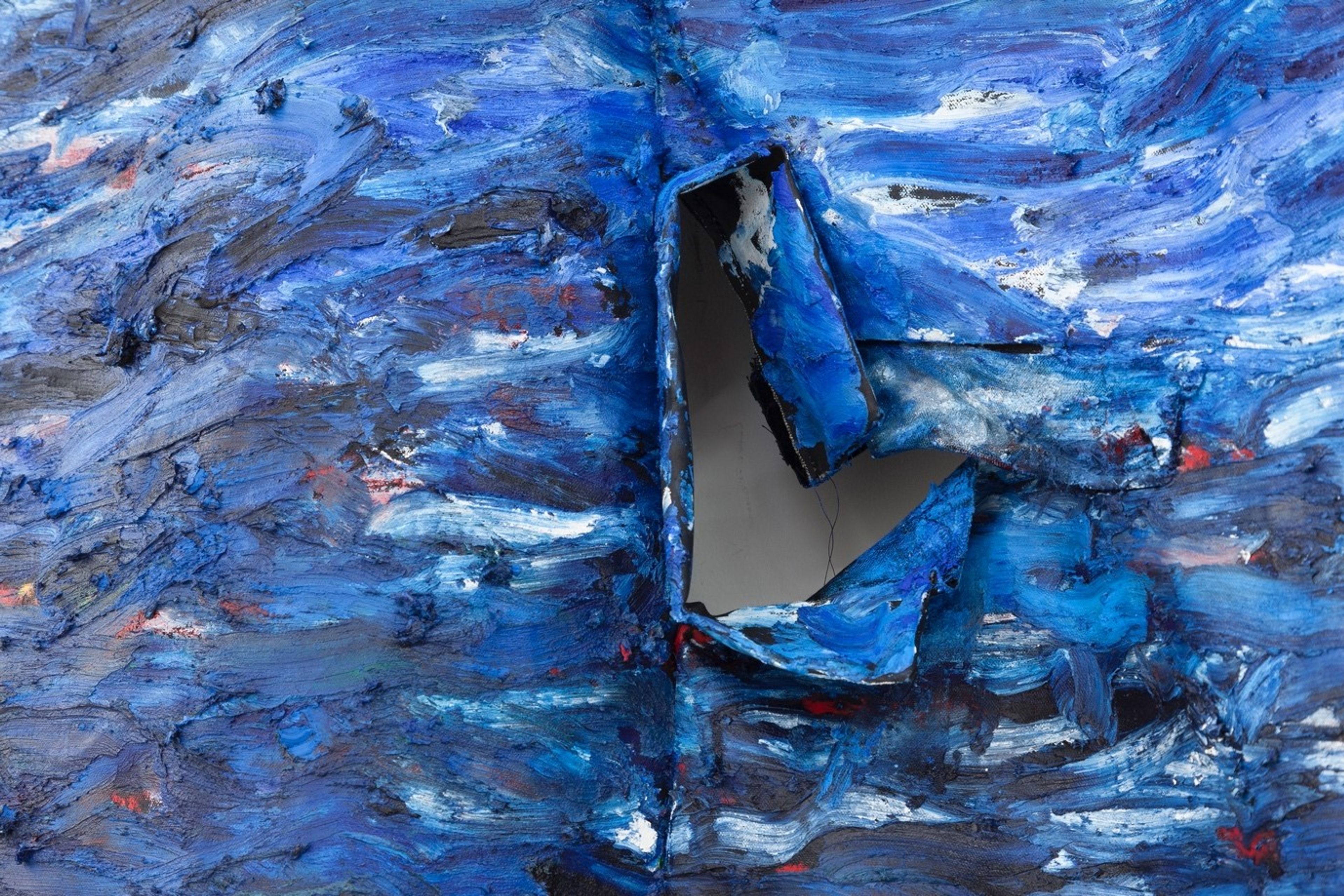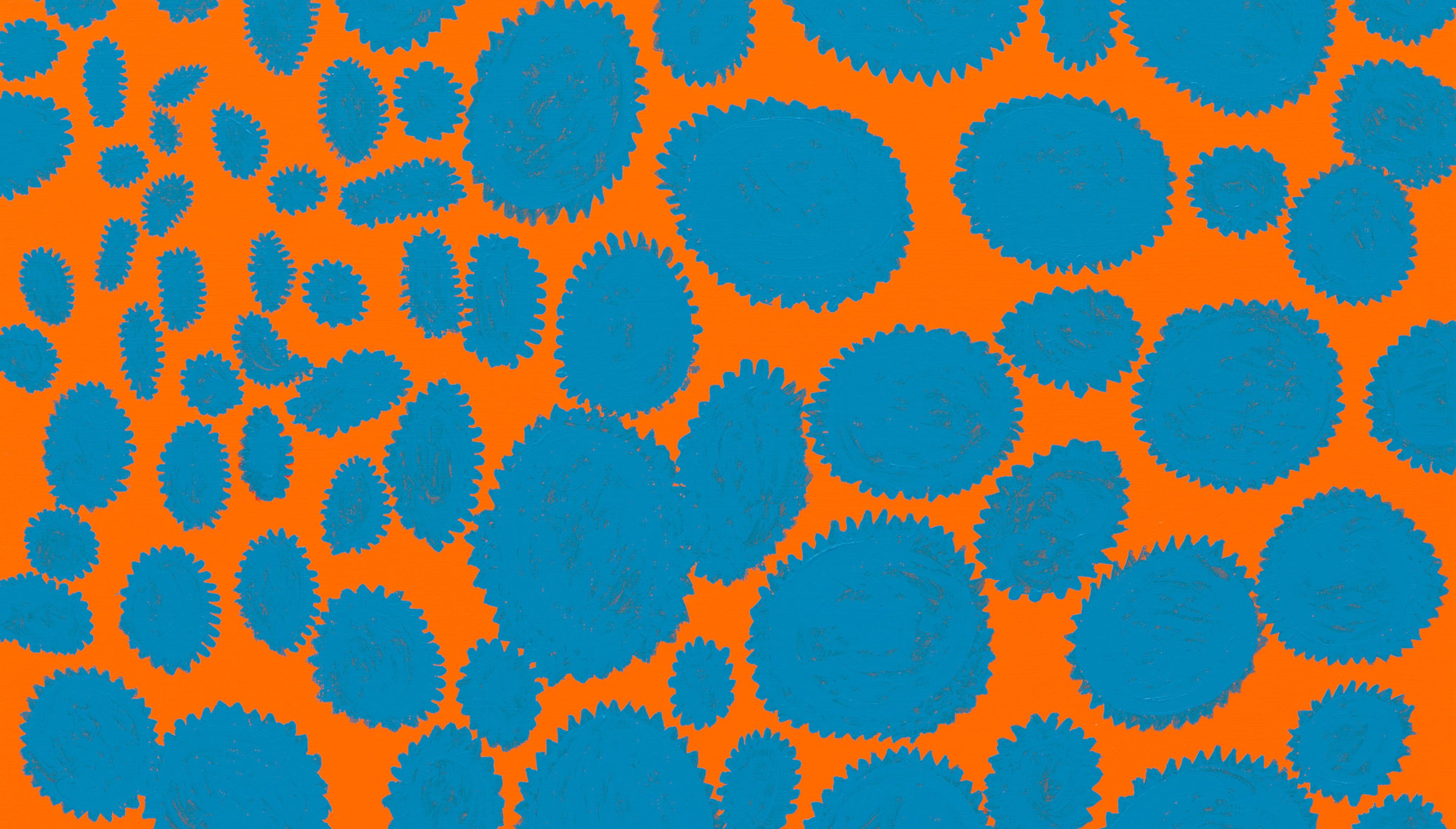Essay by Hilton Als
December 16, 2021
Some time ago, I would read and reread Barbara Novak. Novak is, of course, the great Americanist, author of a number of seminal books on nineteenth-century art with a special focus on American landscape painting. In works such as 1980’s Nature and Culture: American Landscape Painting, 1825–1875, Novak introduced me to transcendental masters such as Thomas Cole, Frederic Edwin Church, and Fitz H. Lane—artists who hadn’t had much critical exposure before Novak gave them a frame. Prior to that, American landscape painting was largely marginalised; indeed, even as late as 2000, few European collections contained works by nineteenth-century American artists, let alone the transcendentalists; there was always Caspar David Friedrich, but next to no Albert Bierstadt. Presumably the earth and its surrounding energy and force were different in the former colonies. Standing in front of great works with Novak’s book in hand (or in my head), I studied the Hudson River school and read transcendentalist writers such as Emerson and Thoreau and Bronson Alcott, too—creators who all shared a common belief: that God was nature, and nature, God. I suppose what I was looking for at the time was an alternative to what I saw, day after day and for years: a rapidly dissembling planet; sad, exhausting, divisive politics; fracture. Looking for some version of cohesion, if only a dream, I turned to other generations, other centuries, where uplift was not only possible, it was germane to one’s creative expression. Sometimes, looking out a train window as the train made its way along one side of the Hudson, I imagined Church with his paints and brush training his eye on the water’s edge, seeing so much in that rivulet, including time coming and going and then going again. The work Church, Lane, and other transcendentalists produced—work whose ideas, ironically, echoed views inherent in the belief systems of Indigenous people, whose monstrous dispossession was rationalised by the Manifest Destiny these very painters helped reinforce—seemed to say that the earth and sun and water and cliffs and rocks that made up the American landscape were not only worthy of thought, but of love; because it’s love that you see in the rutted earth, and in the attention with which landscape was rendered, or thought about, which is to say not inseparable from the romance that comes with the high of being. With Lane and the rest there was none of the glacial distance and coolness we find in painters from the Barbizon school—realists who despite their sometimes ‘poor’ subject matter (i.e., Millet’s The Gleaners and Woman Baking Bread) created work that emphasised the French penchant for prettiness. In Nature and Culture, Novak said American painting was different than its European cousins, or marked by a kind of difference, and I think that has to do with what is not easily discernible in the work, an almost sexual energy that painters like Cole conveyed in their love of crevices and the hidden life under rocks. Unlike other nature painters, such as the justly lauded British artist J. M. W. Turner, Cole’s work isn’t so much of an exercise in the ecstasy of paint as it related to the horizon, the ecstasy of being in relation to a landscape that cannot be controlled, which is to say nature, and that can swallow you whole, like love. The tension and the beauty is in trying to control the vista by reining it onto a canvas even as it goes on and on in the mind. When I first saw Cy Gavin’s work some years ago, it went on in my mind even long after I’d left his studio, in part because of the boldness of his gestures: This was emotional work, and bore no resemblance to the tidy worlds I saw in much of the art I was seeing at the time. Here was an artist whose bigness was allover; he was working it all out and pushing the paint to do things I hadn’t seen before, including how to show the fractured contemporary world in a transcendental light. I remember walking into his small studio—Gavin was thirty years old at the time, personable and energetic—and the feeling of being lit up by his expert handling of the colour blue—a ‘moody’ colour that when used improperly can make the viewer feel cheapened, manipulated, like violins in a weak song telling you what to feel. Gavin’s use of blue, which dominated several of the works I saw that day, had a spiritually transfiguring effect on me, and reminded me of Emerson’s 1841 essay ‘The Over-Soul’, where the writer says:
There is a difference between one and another hour of life, in their authority and subsequent effect. Our faith comes in moments; our vice is habitual. Yet there is a depth in those brief moments which constrains us to ascribe more reality to them than to all other experiences. For this reason, the argument which is always forthcoming to silence those who conceive extraordinary hopes of man, namely, the appeal to experience, is forever invalid and vain. We give up the past to the objector, and yet we hope.
Gavin’s images helped me face the hour that I was living in then. I may spend time with the transcendentalists of yore, but acts of transcendence happen in the now. Gavin’s hour was the hour where I felt filled up, quenched, by his faith in art, which reinspired me to see there is faith in the moment of looking. And faith is at the root of the great turns Gavin’s imagination took and takes in works that I saw later, such as the shocking 2021 Untitled (Beaver Dam), which shows the tangling and intertwining of wood and muck as a kind of fortress against the rising tide. When will the water rise? What will it destroy? Can any of us creatures, beavers included, shore the world up against the always encroaching, unpredictable natural world? Like the phenomenal American poet Marianne Moore, Gavin uses the natural world as a metaphor to describe love, chaos, inevitability—the overwhelming feelings and actions that are part of being alive. Taking in Gavin’s work in Manhattan and then in his studio upstate, I saw, too, how his canvases were not ‘like’ universes unto themselves: they were universes unto themselves, an explosion of activity that fought to be contained even as it tried not to be. Not too far from where those early transcendentalists set up camp, I saw what Gavin longs to make one feel: his cosmos of planets and colours that were bigger than you and me, and as big as the mind and eye makes them. The art historian and artist Henri Focillon advised against understanding spiritual art as existing ‘in some remote, abstract zone, above the earth and above man’. Such forms, Focillon claimed, ‘mingle with life, whence they come; they translate into space certain movements of the mind. But a definite style is not merely a state in the life of forms, nor is it that life itself: it is a homogeneous, coherently formed environment, in the midst of which man acts and breathes’. Abstract and representational all at once, Gavin’s work does come from life, and I think the word breath is important to consider here, not only as that which is necessary to life, but also how it can dictate or be a part of the artist as he makes a gesture on canvas. Inhale, exhale, and see where that breath takes you. Towards imagining stars? To imagining an alternative universe where suffering is reduced to a pin spot if it exists at all? Because look at what we’ve done to the world that Thoreau and Emerson and Church and Lane took such care to describe. Look at it in relation to their reverence, and their belief. Look at how those others came and changed it. They came with their poison and killed birds. They had machines with giant teeth that tore up the earth to find the earth’s value, and then ate it. Sea creatures died. Birds did not know which way to fly. You couldn’t see the moon. The stars were cockeyed. Waves crashed into houses and flooded people out, or drowned them. The rains wouldn’t stop. The arguments wouldn’t stop—about profit versus care, about some idea of progress versus the future of the earth. When I visited Gavin’s studio in the Hudson Valley, I was stopped short by Untitled (Moon), and then Untitled (Stars), both from 2021. Measuring 90 by 82 inches, and 134 by 371 inches, respectively, I consider these towering masterworks to be what one might call contemporary transcendentalism, which is to say the tumult of the world, of the skies, is part of the energy of the pieces, an energy that propels us forward, towards the paintings, and as we’re pulled towards them, we find—delight in—how we can’t push back against them, no matter how far we stand away from them; we are as entangled in Gavin’s shapes here as we are in his beaver dam: We are not free of nature, nor is nature free of us. What other course do we have but to plunge into the great floral bed that is Untitled (Border: blackhaw viburnum & multiflora rose), also from 2021. But is there rest to be had in it? There is scant tranquillity here, despite the captivating beauty of the flowers themselves; you want to bury your face in the blooms, but would you ever recover from their potentially narcotising scent? In her 2020 essay ‘The Disturbances of the Garden’, Jamaica Kincaid describes how the Garden of Eden’s bloom was brief. Knowledge ruins purity. She writes that, as a child reading the Bible, ‘It was the creation story that was so compelling to me, especially the constant refrain “And God saw that it was good.” The God in the Book of Genesis made things, and at the end of each day he saw that they were good. But, I wondered, for something to be good would there not have to be something that was not good, or not as good?’ Contemporary transcendence includes a knowledge of what goes wrong in all that goes wrong and will go wrong as we fantasise about Eden, which is no longer. Gavin’s trees in Untitled (Roadside Trees, brush-hogged), also from 2021, is a contemporary Tree of Knowledge, battered and twisted by automotive transportation, and yet they exist, transfigured by the modern world, and yet it still exists despite pollution, lack of care, isolation. Just like us. Are these trees the new landscape? Is Gavin’s flowerbed, which resembles the kind one would find in 1939’s The Wizard of Oz—nature on a soundstage—part of the new landscape? Gavin’s flowers, his trees, along with his stars and sky: all are elements in our increasingly science fiction world where, despite the ultimately crippling and alienating effects of global warming and splinter, flowers still continue to grow and grow, especially in the light of the artist’s view towards transcendence.



